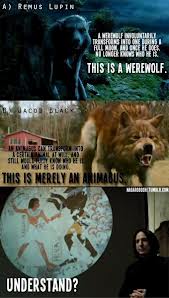
Seeing
that it’s 10:35 PM and I’m just starting to write my blog post, I figure it’s
okay to pull a backup topic out of my brain pocket. Because when I’m this
tired, the only thing I know how to be insightful about is Harry Potter.
To me, one of the coolest things about J.K. Rowling’s world is how she has a
backstory for nearly everything in the ‘Potterverse’. This includes Rowling’s
names for characters, spells, and places in the world of Harry Potter. The
behind-the-scenes components of Rowling’s world are extremely complex. Let’s
start off with the etymology behind the spells in Harry Potter. First
off, nearly all of the spells in Harry Potter are in Latin, or sometimes
in an obscure foreign language. Depending on what the spell is supposed to
accomplish depends on what the incantation is for said spell. For instance, the
incantation for a charm to summon an object is “Accio”. In Latin, “accio” means
“I call” or “I summon”—which is the purpose of the spell. Other examples of incantations
and their meanings are “Alohomora” (a spell used to unlock doors) which means “friendly
to thieves” in a West African Sidiki dialect, “Crucio”, or the Cruciatus Curse
(used to physically torture victims) literally means “I torture” in Latin; and “Avada
Kedavra”. Avada Kedavra is the worst of the three Unforgivable Curses (Imperio,
Crucio, and Avada Kedavra) in the Harry Potter books and it’s also known
as the Killing Curse. This was the curse Lord Voldemort tried to use on Harry
when he was only a baby, and it backfired on Voldemort himself. Rowling says
that the “Avada Kedavra” comes from an ancient spell in Aramaic, the origins of
abracadabra which literally translates to “let the thing be destroyed”.
So
spells and their incantations have fun little backstories according to what
language they derive from and how they are being used. Instead of just making
up nonsense words, or relying solely on Latin (because some fantasy authors
do), Rowling uses a variety of languages to make up the incantations for her
spells, and sometimes the meaning of the incantation has an interesting
translation, like “Alohomora”. Rowling doesn’t just stop at spells though. In Harry
Potter, each witch or wizard needs a wand in order to perform magic. These
wands can be purchased at a wand shop or from a wand maker, like the acclaimed wand
maker Ollivander. Wands have four main characteristics: length, consistency,
core, and wood type. Wands usually have a core of unicorn hair, dragon
heartstring, or phoenix tail feather, and their consistency can vary from
springy, rigid, swishy, or supple. But what’s interesting about the wands in Harry
Potter is the type of wood they’re made of, and how that relates to the
character that possesses the wand. Rowling uses the Celtic tree calendar when assigning
characters a wand. The Celtic tree calendar is based on the idea that certain
parts of the year match up with a certain type of tree, and those born in that
time bracket have certain characteristics. It’s basically a form of astrology.
While Rowling doesn’t go so far as to say her characters’ birth dates determine
their personality, when she is giving a character a wand, the type of wood used
in their wand often correlates with when their birth day is. For example,
Hermione Granger’s birthday is September 19th, and her wand is 10 ¾ inches,
vine wood, with a dragon heartstring core. Vine is the tree that matches up
with dates between September 2nd and September 29th.
Sometimes, the type of wood used for a character’s wand symbolizes something
about their personality or their story as well. For example, Lord Voldemort’s
wand is made out of Yew. Yew is a tree that is associated with power, mystery,
and longevity, making it appropriate for the mysterious, power-hungry,
death-obsessed Lord Voldemort.
Finally,
the names of characters all have a type of etymology or back story in the wonderful
world of Harry Potter. In the world of fantasy, names and their meanings
are extremely important. A name can tell you so much about a character. For
instance, Harry’s godfather is a man named Sirius Black. He was in Azkaban
prison for twelve years and was James Potter’s (Harry’s dad’s) best friend.
Sirius is an unusual wizard because he is an unregistered Animagus—a wizard who
can turn him or herself into an animal at will. Sirius can turn into a large,
shaggy black dog, which is vital in helping him escape from Azkaban. The name ‘Sirius’
comes from the Sirius constellation, the dog constellation, a gesture to Sirius’
abilities as an Animagus. Like in Sirius Black’s case, Rowling often uses names
to reveal certain traits in a character or about a place. For instance, the
name “Dumbledore”, the last name of the brilliant yet quirky headmaster of
Hogwarts, means “buzzing bee” or “bumblebee” in Old English. Rowling said that
she imagined Professor Dumbledore buzzing around like a bumblebee throughout
Hogwarts. The list goes on and on for the etymology behind Rowling’s names for
her characters. She also uses this same system when naming places, creatures,
and more. For example, “Animagus” combines the Latin words for animal and “magus”
to mean “animal wizard”, and Rowling uses a pun when naming Sirius Black’s
mother’s dirty old house, Grimmauld Place: phonetically, it sounds like “grim
old place”.

Professor McGonagall in her Animagus form, the cat
And because Harry Potter trumps Twilight any day of the week...
SO
WHAT????
When
authors create a fantasy world, they need it to be based in reality; otherwise it’s
more difficult for people to relate to that world and the story that takes
place within it. By using the roots of ancient language and other allusions
when naming characters, spells, and places, J. K. Rowling gives her readers a way
to relate the fantastical to reality. Besides giving her fantasy world logic
though, the etymology and backstories behind the names and words for things in Harry
Potter engages the reader. When an author does this, it’s like their little
way of leaving clues for the readers clever enough to pick up on it—a foreshadowing
technique that authors can use to give the reader insight into a character’s
backstory or their fate, what the tone of the setting is, and more. Like my
comment on Samm’s post on Tolkien etymology, when authors use this
foreshadowing technique, it makes the experience much more interesting for the
reader. It shows the reader that the author didn’t take any aspect of their
story lightly, including the names. When the author becomes so invested into
the story, it promotes the reader to become more invested in the story as well.











